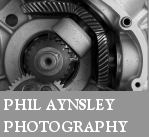



Exterior of the gear-box showing quadrant and change speed lever mounted on the box.
R. Section of the gear-box showing the heavy shafts and bearings.

A 8 h.p. twin three-speed countershaft gear model is the latest development of the Rudge Company. The interchangeable wheels will be noticed.
The 8 h.p. Twin - Now Fitted with Three-Speed Countershaft Gear, Chain Drive and Interchangeable Wheels.
IN addition to the well-known single and twin-cylinder Rudge-Multi models an entirely new passenger outfit will be staged at the forthcoming Olympia Motor Cycle Show. This machine is certain to attract a large amount of attention, since it is a newcomer to the ranks of the 1,000 c.c. sidecar machines, which are so popular at the present time. There are many features of considerable interest, though such well-known components as the Rudge spring forks, separate oil tank with pedal control pump, and the sloping top tube are, of course, retained.
The 85x88 mm. V type twin engine is similar to that which has already proved itself in connection with the Rudge Multwin, with the exception of the fact that the magneto is placed behind the rear cylinder and gear driven from the timing gear. Mounted on the crankshaft is a multiple clutch similar to that already well-known to Rudge riders, but carrying externally a spring drive in the form of a series of face cams on the driving sprocket, held by a spring in engagement with a corresponding series on the driven member. A cast aluminium chain case protects the primary chain to the gear box.
Roller Bearing Gears.
Singularly stout construction characterises this new box. Both shafts are of large diameter and heavy splines are used. All gears are in constant mesh, top and low being engaged by means of stepped dogs having slightly inclined faces. Middle gear is obtained when the two central gears which move together are both locked on their respective shafts by the splines. It should be noted that a double row roller race is employed on the primary member, and large single row roller and ball bearings in other parts of the box. The kick-starter is of the exposed type, but provides ample leverage. and is stoutly constructed. A second chain transmits the power to the rear sprocket, which is mounted on double TOW bearings in the rear forks. All wheels are instantly removable and interchangeable, the hubs being of the well-known tubular construction associated with the manufacturers.
Large ball bearings are used and the drive is taken through a series of dogs, all working parts of the hub being thoroughly protected by caps. Each wheel IS equipped with a large diameter brake drum flanged on to the wheel rim, and since the shoes of both back and front brakes are of considerable length a very satisfactory retarding effect should be obtained.
All-steel Frame Construction.
At first sight it would appear that the frame is of normal construction, but it should be pointed out that steel lugs are used throughout. This feature extends even to the engine plates and gear box bracket. This latter is a steel stamping bent over to form a channel in which the box is gripped, and since both quadrant and gear lever are carried on the box any movement of the box to compensate for chain stretch will not affect the selecting mechanism. In order to render easy the removal of either cylinder, the lower tank rail is .set over to one side to a considerable extent, but this in no way detracts from the pleasing appearance of the machine. 650x55 Dunlop grooved tyres are fitted, and a roomy and comfortable sidecar is attached to this powerful outfit. Details include a Senspray carburetter, set vertically between the cylinders, the well-known spring-up stand, large aluminium footboards, and a serviceable black finish to many parts which are usually plated.
A short trial run convinced us of the ample power of the engine and the absence of snatch from the chain transmission. Gear changes were made easily and quietly; indeed, in spite of the fact that we were entirely strange to the box the changes were practically inaudible.
The Motor Cycle November 25th, 1920 Page 652